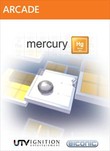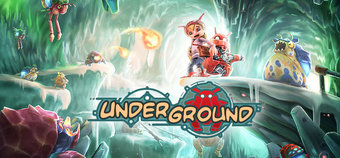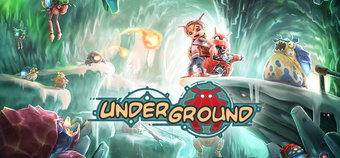What's this? A wild 400 point game appears! With Microsoft deciding to charge increasingly more for titles on their slightly-less-fantastic-than-it-used-to-be downloadable games store, the Xbox Live Arcade, we'd started to think that the lowest, £3.40 price point had been relegated to the realms of extended demos for retail games - a la Dead Rising 2: Case Zero - or add-ons for the extortionate 1200 Microsoft Point (about £10.20) games. In fact, the only other 400 point game released over the past year was the obscure brutally hard platform title NIN2-JUMP. For that reason alone, it's worth checking out Mercury Hg - but there's plenty of bang here for your pound.
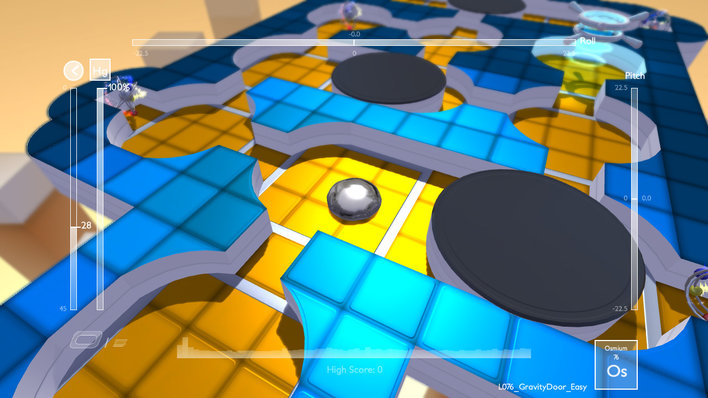
Osmium is the densest element, and is twice as dense as lead.
Mercury Hg is basically a cross between Super Monkey Ball and Everybody Plays' staple online-time-killer (and one of the first Xbox Live Arcade games), Marble Blast - presented with increasingly challenging mazes, it's up to you to roll your amorphous blob from one end to the other, losing as little as you can along the way. Like Super Monkey Ball, you're not actually controlling your blob, but instead are tilting the floor to roll it in the direction you want - kind of like one of those tilty ball-in-hole puzzles you get in Christmas crackers, in amongst all the shoe-horns and fortune-telling fish.
Mercury Hg, as the name suggests, has you directing a blob of mercury through the game's sixty levels (with more promised as downloadable add-ons in coming months), navigating your way across narrow bridges, tight platforms, and even jumps as you go. Thankfully, seeing as your blob of mercury's more fluid than a monkey, you can afford to slosh some of it over the edge before you get a game over - although you'll need to keep it all intact if you want the best scores. When you're playing through the game's main Discovery Mode, each level has its own four objectives, which earn you an 'atom' if you achieve them. There's one for finishing a level with 100% of your blob of mercury remaining, another for simply completing the level, a third for finishing within an allotted time, and a final one for collecting all of the 'bonuses' scattered around the level, which, somewhat confusingly are also known as atoms, and so will be referred to as bonuses from here on in...
Collecting the atom awards for each level isn't just for show either, as you'll need as many as you can get to unlock all the levels in the game. From the periodic table-themed level select screen, the levels are organised into 'groups' of twelve levels each, with each new group being unlocked when you accumulate another twenty five atoms - which may sound like a lot, but you only need to get roughly two atoms per level, one of which you're guaranteed just by finishing the level anyway. If you just want to get through to the end of the game, perhaps the easiest atoms to go for are the completing the level ones (obviously), and the collecting all the bonuses ones - seeing as keeping all your mercury and finishing under par time can get fiendishly hard on the later levels. Another trick is to repeat the level multiple times, going through first, as slow and as carefully as you can to get all the bonuses, finish the level and try not to lose any mercury; then on your second attempt, you can just bomb it to the exit to get the time atom, ignoring pick-ups and any mercury you lose.
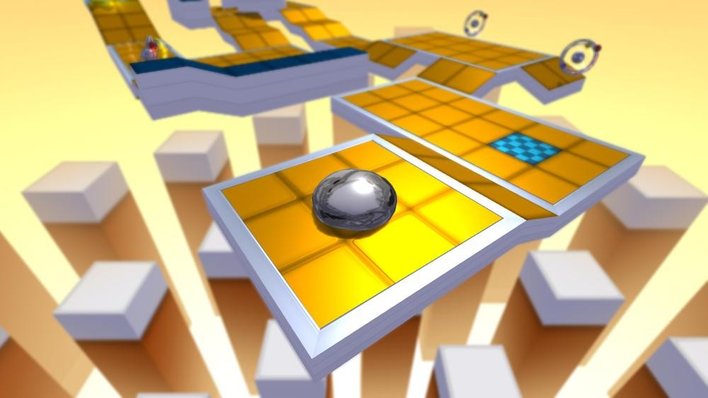
Gallium is used in the power cells of various space satellites, and in those buggies used to explore Mars.
Of course, there'd be no fun in it if the game was just a series of straight paths to whizz down from beginning to end, and each level has a variety of puzzles to solve and pitfalls to avoid. For starters, a lot of levels don't have walls to bounce your blob off, so you often find yourself flying off into the abyss if you tilt the floor too much. Then, there are pieces of floor that are rougher than others, which increase friction, and break your blob up if you move too quickly, making it harder to keep track of, and almost impossible to control. There are also portal-like devices that change the colour of your blob, which in turn allows you to activate certain switches (three by three grids that require you to be the correct colour and roll over all the pads to turn them on), and soon you'll need to combine two colours by splitting your blob into two and colouring each one separately, before mixing them together to make a new colour, like Red and Yellow making Orange (the A button, which gathers your blobs of mercury together is rather useful here). If that's not enough, there's devices called magnetrons littering some levels, which can either repel or attract your mercury - usually straight off the edge of a cliff, while some of the later levels also up the ante by making it so that the floor forms just a few squares in front of your mercury, so you're never really sure what's coming next, whether it be a wall or a hole. If it all sounds a bit confusing, there's no reason to panic, as the game's comprehensive tutorial eases you in at the shallow end, taking you through everything you need to know.
Once you've rolled your way through the main Discovery Mode of the game, there's a few other modes to keep you busy. While you're playing through the main mode, you'll be told you've unlocked various bonus levels, with names like Antirubidium, Anticarbon and such. Basically, these levels have the same layout as your standard levels, but the objective is different - you start a blob of mercury that's a fraction of the size it was on the standard level, and you need to collect all of the vials of mercury scattered around, which will be added to your blob of metal, making it swell in size. There's no time limit in these levels, and no bonuses to collect or anything - all you need to do to open the exit is to build your mercury blob up to 100%, which means not sloshing any over the side accidentally.
Finally, there's the Challenge Mode, where you play a few selected levels back to back, but the catch is that your mercury meter doesn't get re-filled for each new level - so if you're careless and slosh 48% of your mercury over board on the first level, you'll be stuck with just 52% for the remaining levels. And your amount of mercury matters - each challenges has two different stages, the second of which is the harder. For stage one, you just need to finish the levels with 50% of your total mercury left and get roughly half of all the pick-ups - and as there's no time limit, it's not too difficult. The real challenge comes with the second stage, where you need to finish without losing any mercury, get all the pick-ups and complete all three levels in a set time.

Ytterbium can be used as a a source of radiation for a portable X-Ray Machine - without the need for electricity.
But forget about completing the levels without losing a drop of mercury in the shortest amount of time, as seemingly, the biggest battle of the Challenge Mode is having to compete with the bugs. You see, every so often Mercury Hg decides, for seemingly no reason at all, to go into mega slow motion, juddering along at such a rate it makes a level nigh on impossible to complete. Your controls become practically unresponsive, and as it's so hard to tell how fast your mercury's going, you'll often find yourself just flying off a cliff. Sadly, the only way to fix the random slowdown bug is to restart the entire challenge (because you can't redo just one of the levels), meaning your progress through the challenge is all lost through no fault of your own. This happened to me twice in a row on the first challenge in the game - after which my entire console locked up on a white screen and I had to turn it off and on again. This same bug exists in the other modes too, but is nowhere near as troublesome, as it's as simple as pausing the game and choosing to restart the level to fix. Or you might have to restart your console - but as it auto saves your progress after every level, you won't really lose much bar a few minutes. Hopefully, it'll get patched out of the game with an update in the near future - until then, the only thing to do really is to pray it doesn't screw up during challenge levels...
While the spoil-sport chemist in me disagrees with them splitting the periodic table into five groups (there should be at least eight groups, if not eighteen), and doesn't approve of their definition of antimatter (there is no such thing as anticarbon etc - it's sub-atomic particles that have anti variants, not the elements - you can see that Chemistry degree paying off now!), I do really like the game. And at a bargain price of £3.40 (or £3.99 on the PSN), you really should get it if you have more than a passing interest in puzzle games - the bugs do put a bit of a downer on what is otherwise an awesome little game, though.
Format Reviewed: Xbox 360


